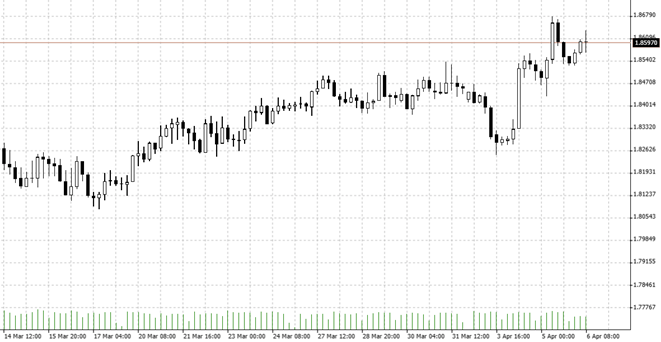

06.04.2023 – The situation on the financial markets is currently very opaque. On the one hand, the major central banks are not supposed to raise interest rates further because of the threat of recession. On the other hand, inflation is being kept in check. This argues for high interest rates. More clarity for the US should come from the non-farm payrolls, which will be released tomorrow, Good Friday. Until then, there is an international back and forth.
Brokers have been looking overseas for clarity lately. But there have been mixed signals there, too: New Zealand’s central bank surprised by raising interest rates by half a percentage point – twice as much as expected. Governor Adrian Orr argued that inflation was too high and that inflation expectations remained stable despite the weaker economy.
Interest rate pause in Australia
The Reserve Bank of Australia also struck hawkish tones. Governor Philip Lowe warned that the interest rate tightening cycle was not over yet. This is all very contradictory: Australia paused shortly before and left the policy rate unchanged at 3.6%. Meanwhile, the Bank of England continues its upward trajectory: it recently raised rates for the eleventh time in a row to 4.25%. Analysts expect another quarter percentage point hike at the May meeting. Here is a four-hour chart of the GBPAUD to keep you up to date with this news.

Source: Bernstein Bank GmbH
A look at the US employment data.
This brings us back to the US. Goldman Sachs just warned of a shocking rise in tomorrow’s jobless claims. But Danni Hewson, head of financial analysis at AJ Bell, sees little chance of an end to tightening even with strong recession signals: “On the positive side, the rate rise could pause, which would normally be positive for equities.” But: “The worry is that the Fed may have to blow the bugle before it actually ends its war on inflation. That could lead to the worst of all worlds – the dreaded stagflation, where the economy shrinks but prices continue to rise sharply.” That would mean high interest rates and a tendency towards a hard dollar.
Probably not the end of tightening yet
“The battle against inflation seems far from won,” says Ivailo Vesselinov, chief strategist at Emso Asset Management in London. Notwithstanding recent signs of slowing economic activity, central banks may be forced to keep raising interest rates: “If disinflation hits a wall later this year, major central banks will struggle to confirm current market prices for rate cuts.”
Our conclusion: most experts believe that the world’s central banks – led by the Fed – cannot yet stop tightening monetary policy, let alone cut interest rates again. As seen with the Australian dollar, currencies that pause will take profits on the short side. So keep an eye on the real-time economic data – Bernstein Bank wishes you successful trades and investments!
_________________________________________________________________________________
The content of this publication is for general information purposes only. In this context, it is neither an individual investment recommendation or advice nor an offer to purchase or sell securities or other financial products. The content in question and all the information contained therein do not in any way replace individual investor- or investment-oriented advice. No reliable forecast or indication for the future is possible with respect to any presentation or information on the present or past performance of the relevant underlying assets. All information and data presented in this publication are based on reliable sources. However, Bernstein Bank does not guarantee that the information and data contained in this publication is up-to-date, correct and complete. Securities traded on the financial markets are subject to price fluctuations. A contract for difference (CFD) is also a financial instrument with leverage effect. Against this backdrop, CFD trading involves a high risk up to the point of total loss and may not be suitable for all investors. Therefore, make sure that you have fully understood all the correlating risks. If necessary, ask for independent advice. CFDs are complex instruments and are associated with the high risk of losing money quickly because of the leverage effect. 68% of retail investor accounts lose money trading CFD with this provider. You should consider whether you understand how CFD work and whether you can afford to take the high risk of losing your money.7
